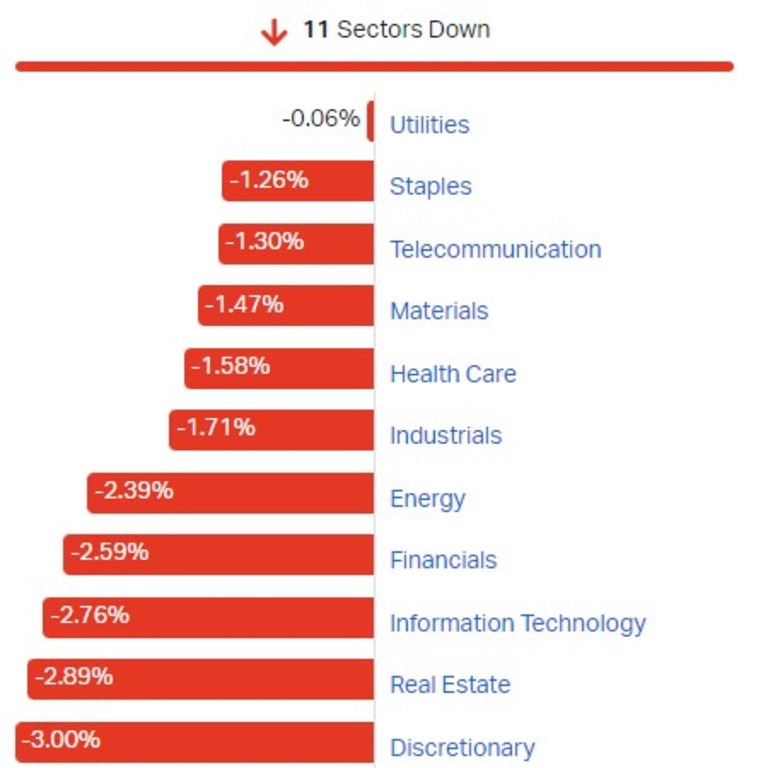‘Nowhere to hide’: ASX pummeled to $59bn loss
There was ‘nowhere to hide’ for traders on Friday as the ASX saw $59bn evaporate by the closing bell.
The ASX lost $59 billion on Friday, weighed down heavily by financials and real estate.
The S&P/ASX200 fell 2.1 per cent to 7943.2 for the worst day in 16 months.
All 11 sectors sunk, with discretionary spending stocks at the back of the pack, losing three per cent as a whole.
NAB came out the most battered and bruised of the big four banks, closing down four per cent at $36.50. CommBank lost 2.8 per cent, Westpac dropped 2.4 and AND shed 1.8 per cent.

A day after riding a wave of confidence on the prospect of a US rate cut, Wall Street soured on manufacturing data; production activity is still shrinking, and its contraction is accelerating.
“There was nowhere to hide overnight as dour economic data fuelled hard landing fears, sending US equity indices and bond yields lower, with chip stocks again a punching bag,” IG market analyst Tony Sycamore said.
West Australian uranium producer Paladin Energy was the biggest punching bag on the ASX200 on Friday. Paladin closed with a 10.8 per cent loss, finishing at $10.40.
French-listed Kazakhstani uranium giant, Kazatomprom, spooked uranium markets by upping its production guidance, sparking fears prices will not stay high.

Back on the ASX, uranium equities cooled. Bannerman Energy lost 13 per cent ($2.60), Boss Energy fell 12.8 per cent ($3.18) and Nexgen Energy lost 12 per cent, though the latter is 40 per cent ahead of the energy sector for the year.
Across the ASX200, Domino’s Pizza lost a $300m slice of value, as 9 per cent of its value melted off, for a closing price of $29.56.
Alcoa, down seven per cent on the year, fell six per cent on Friday. The aluminium behemoth just closed a $2.8bn deal to acquire Alumina Limited, and traded at $47.95 at the close.
Only 20 ASX200 equities rose on Friday, and 14 were flat; 166 were in the red.
On Wall Street, stocks tumbled just a day after positive signs the Federal Reserve was about to cut interest rates.

The S&P 500 sank 1.4 per cent on the US manufacturing.
The Bank of England cut interest rates for the first time in four-and-a-half years on Thursday UK time. After the Isles’ worst inflation shock in decades, inflation is now holding at the central bank’s two per cent target.
A narrow majority of the Bank of England monetary policy committee voted to cut the base rate by a quarter of a percentage point to 5 per cent.
Inflationary pressures had “eased enough”, governor Andrew Bailey said, enabling the first cut since the bank stopped hiking in mid-2023..
“We need to make sure inflation stays low, and be careful not to cut interest rates too quickly or by too much,” he said.




